New Jobs come to the African American Community in Roanoke
In the 1880s Roanoke began expanding rapidly around the hub of activity the railroads brought to the city: the Norfolk & Western Railroad, the Shenandoah Valley Railroad, the Roanoke Machine Works, and Hotel Roanoke, all of which were under the management of the reorganized Norfolk & Western Railway by the turn of the twentieth century. These companies employed many Roanoke residents, including African Americans from Gainsboro and Northeast. The railroad jobs were the best paying jobs in the region for Black workers. Railroad owners founded a subsidiary company, the Roanoke Land and Improvement Company, to purchase land and construct housing to accommodate all the new railroad workers.
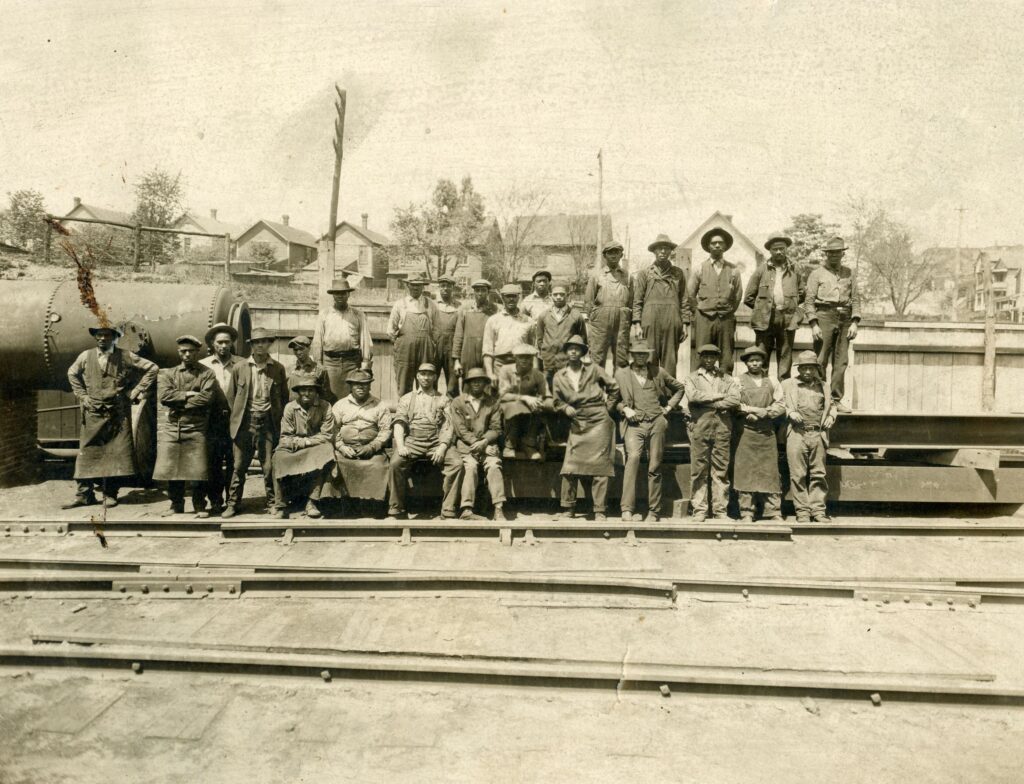
The railroads set the rhythm of the days for many residents of Gainsboro and Northeast Roanoke, whether they worked for the railroad or not.
“I remember not knowing how to tell time but knowing that you could hear the whistles from the shop. In the morning they would sound off, and you knew it was time to go to work. You’d hear them at midday, and it was lunchtime. Then you would hear them again in the evening, and you knew Grandpap was coming home.” —Claude Page III, in African American Railroad Workers of Roanoke, p. 120
When he was a child, John Nutter knew the best times to go watch the trains from the Henry Street and Fifth Street bridges. “I would walk down to the station around eleven o’clock in the summertime and stand there and watch the trains. Those were the train times because you had two trains going west, one going east and, around noon, one going south toward Winston-Salem. And you’d get to see trains from the Southern Railway and also trains from Norfolk & Western. Norfolk & Western would be running the Powhatan Arrow west, and I believe it was the Birmingham Special that was running toward Bristol. And you had the ‘Punkinvine’ train that ran toward Winston-Salem all in there at the station at about the same time.”
— John Nutter, in African American Railroad Workers of Roanoke, p. 77
Working for Norfolk & Western
The railroads and the Machine Works, which became the Roanoke Shops of the N & W Railway in 1897, required a substantial workforce and drew many people to Roanoke. For African Americans, some of whom had experienced enslavement or the hardships of sharecropping, working a railroad job with regular pay was very attractive, even if it was physically taxing or even dangerous. Black workers from the local area and beyond found jobs on the trains, at the local stations and railyards, at the hotel and company offices, and in the Roanoke Shops, where locomotives and rail cars were manufactured, serviced, and repaired.
For many decades, the jobs at the railroad were segregated. Positions available to Black workers were those considered dangerous and low-skill, such as firemen, brakemen, yardmen, porters, cooks, janitors, and laborers. Over time, technology made some of those positions, such as firemen and brakemen, less dangerous, and White workers displaced African Americans from those roles. Because of social custom of the time, Black workers were never placed in supervisory positions over white workers.
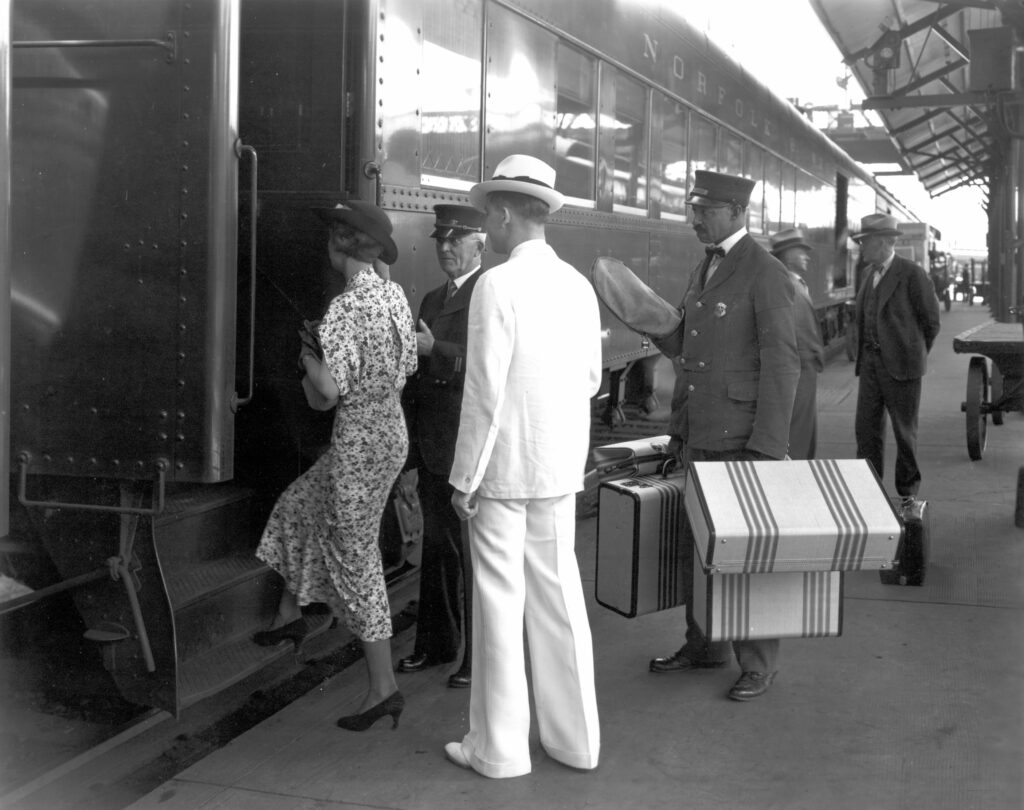
Yet, the jobs with the railroad paid more and held more prestige than most other jobs available to African Americans at the time. For those previously dependent on farm work, the railroad provided regular pay. Their jobs at N&W allowed many Black workers to purchase a home and send their children to college. Railroad workers were respected as community leaders and were active in their churches and many civic and social organizations.
“I went to work for Norfolk & Western in 1938. It was the best job I could get…There wasn’t any other outfit paying as much as the railroad for labor, and that’s what I would be getting, a laboring job. I went with the railroad.” — Al Holland, in African American Railroad Workers of Roanoke, p. 32
Railroad workers also formed friendships and social networks at the workplace. The company sponsored the N&W Stars baseball team, composed of Black railroad workers, during the 1920s and 1930s. The N&W Male Chorus was founded by Harold Williams, its first director, in 1935. The 40-member chorus performed at company and church events locally and out of town. The N&W Railway paid for their tuxedos and set aside a special rail car for them when they traveled. Workers also established their own more informal groups, such as the Twilight Chorus, a gospel group whose members worked in the Freight Station. Long-term African American employees were recognized by the railroad with membership in the N&W Veterans Association, Colored Division, which was founded in 1930.
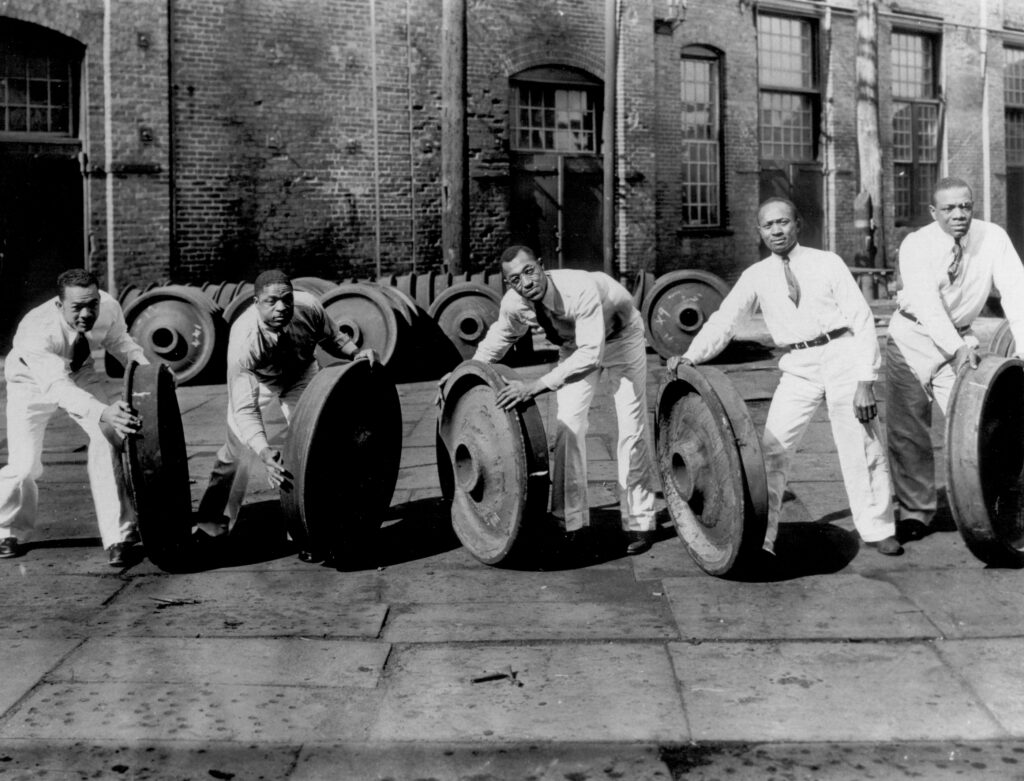
Integrating the Segregated Workplace
However fortunate to be working for the railroad, the segregation of the Jim Crow era restricted opportunities for Black workers. African Americans were barred from supervisory positions and prestigious jobs, such as conductor, engineer, or skilled machinist.
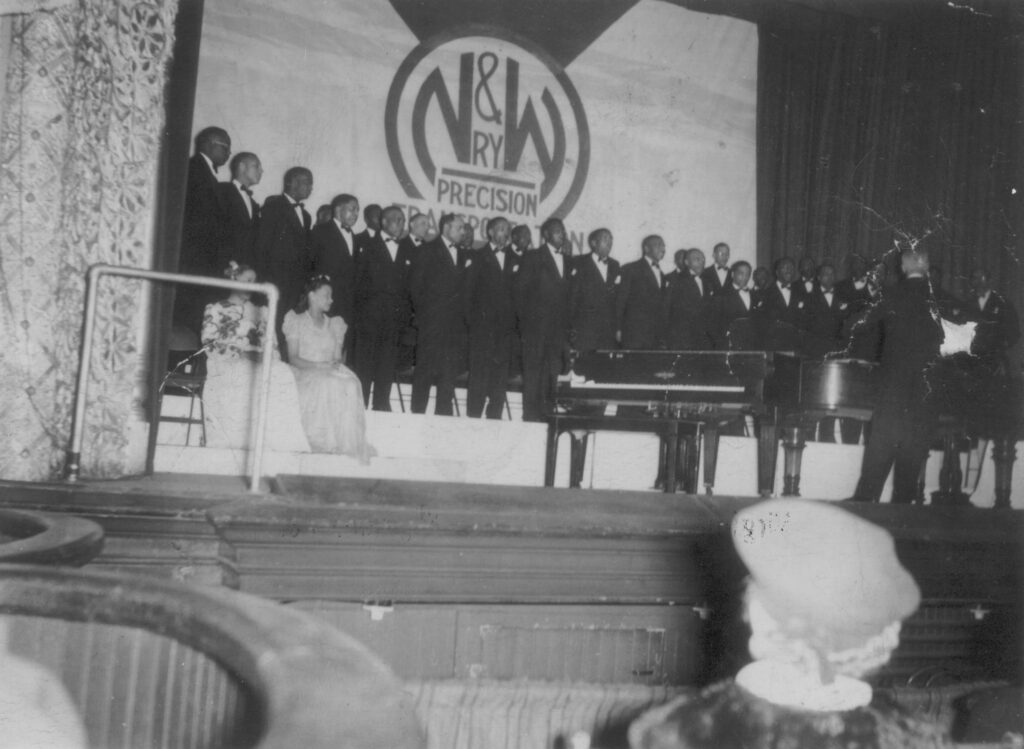
At a hearing in 1943 discussing limited opportunities for African American workers, “the Norfolk & Western’s general counsel freely admitted, ‘the reason is racial…The sentiment of the employees of this company and the public in the territory in which it operates condemns the placement of a Negro in position of command over white men…that sentiment controls the management.’”
—T. Kornweibel, Railroads in the African American Experience (2010)
Additionally, unions for railroad workers were segregated, only representing either Black or White workers, and through the 1930s the railroads only recognized and negotiated with White unions. That began to change in the 1940s when railroads were required to represent all employees, both Black and White.
Read about Railroad Unions in Roanoke
The history of the fight for equality for African American railroad employees is documented in the “From Cotton to Silk” exhibit at the Virginia Museum of Transportation, as well as in the Oral Histories found at the website From Cotton to Silk: African American Railroad Workers of the Norfolk & Western and Norfolk Southern Railways
After the passage of the 1964 Civil Rights Act and the establishment of the Equal Employment Opportunity Commission, the N&W developed a racially integrated workforce. Some of the first Black workers to be promoted into skilled and supervisory jobs were of the second and third generations of their families to work for the N&W Railway. They benefited from the advocacy and support of their fathers and grandfathers, uncles and neighbors, whose diligent work paved their way. While discrimination and racism in the workplace did not disappear overnight, the percentage of African American workers in upper-level jobs grew within the N&W Railway, which became the Norfolk Southern Corporation after its 1982 merger with Southern Railway.
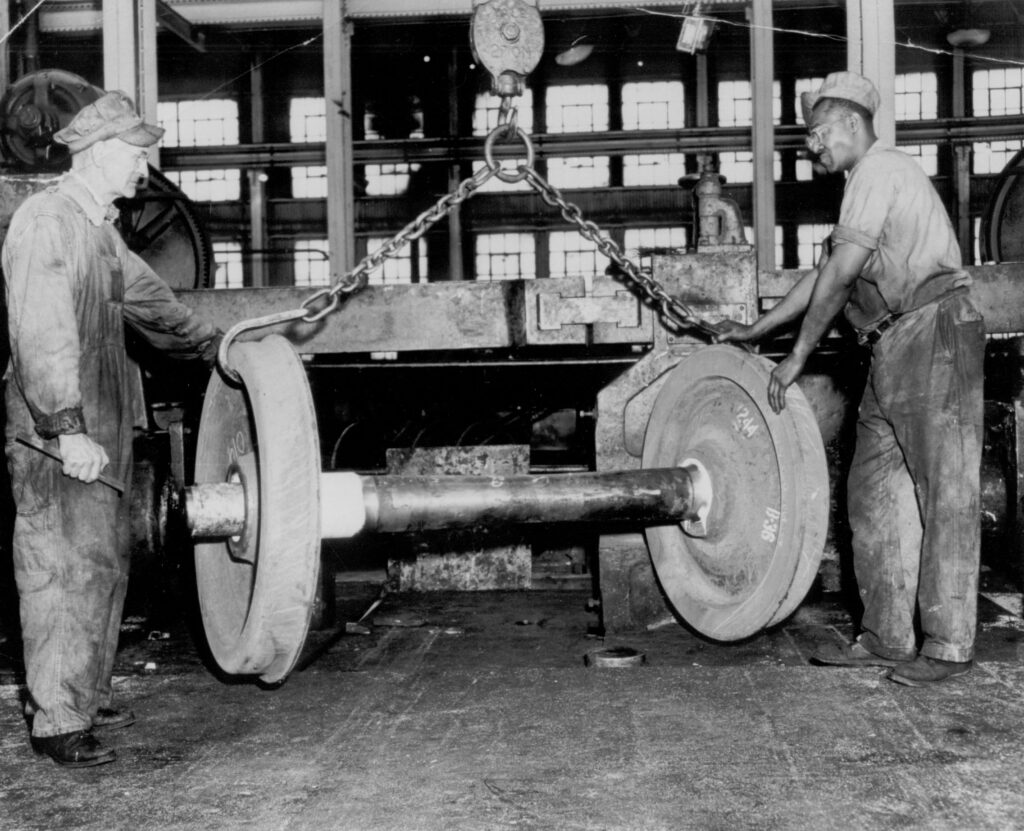
“My grandfather passed away in 1980…He didn’t get the opportunity to see me work for the railroad, but I think about it every time I run the engine…I know he would have been really proud to have seen that. I think about my grandfather and his days of going to work, and I think about some of the things he went through. I was working as a conductor—they weren’t even allowed to do that…Working for the railroad makes me feel proud because I am connected with my grandfather. I know how he carried himself, and this is my chance to walk in his footsteps. I try to make the best of it.”—Claude Page III, in African American Railroad Workers of Roanoke, p. 125
Sources
Dotson, R. (2007). Roanoke, Virginia, 1882-1912: Magic City of the New South. The University of Tennessee Press.
Dunnaville, C., Jr. (2004). Gainsboro and its outstanding Black citizens. Journal of the History Museum and Historical Society of Western Virginia, 16(1), 36-41.
From Cotton to Silk: African American Railroad Workers of the Norfolk & Western and Norfolk Southern Railways. [oral history transcripts] https://fromcottontosilk.wordpress.com/
Kornweibel, T., Jr. (2010). Railroads in the African American Experience: A Photographic Journey (Illustrated ed.). Johns Hopkins University Press.
Morrison, M. (1994, Jan 3). Singing on the railroad. The Roanoke Times.
Roach, R. (1987, February 25). ‘A source of pride:’ Exhibit shows blacks’ railway contribution. Roanoke Times & World-News, pp. B1-B2.
Scarborough, S. (2014). African American Railroad Workers of Roanoke, Oral Histories of the Norfolk & Western. The History Press.
